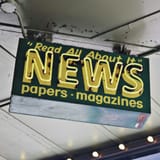Spanish Police Bust Banksy Forgery Ring: Inspired by Dismaland

Spanish police have successfully uncovered and arrested a group of fraudsters involved in counterfeiting artworks by the renowned street artist Banksy, with widespread sales across Europe and the United States. Two of the detained individuals are suspected of being behind the forgeries in Zaragoza, while the other two are believed to have been responsible for selling them.
According to authorities, the group sold a minimum of 25 spray-painted cardboard works through specialty stores, auctions, and online platforms in several countries. Despite the forgeries often being sold at reasonable prices, individuals with expertise in the art world managed to secure significantly higher amounts by presenting them as authentic Banksy pieces. Connected to Banksy’s Dismaland project, the group is estimated to have gained over €10,000 through their deception, with some buyers paying up to €1,500 for individual works.
This case raises concerns about the increasing spread of fake Banksy artworks. In response, the artist established Pest Control in 2009 to authenticate his works. Catalan police collaborated with Pest Control to verify that the artworks and accompanying certificates sold by the Zaragoza group were indeed counterfeit. The investigation is ongoing, and authorities have not ruled out the possibility of additional arrests.
Dismaland: Banksy’s unconventional art extravaganza
Dismaland was a temporary art event organized by Banksy, held in secret in Weston-super-Mare, England, during August-September 2015. Described by Banksy as a “family theme park unsuitable for children,” it presented a sinister twist on Disneyland and featured ten new works created by Banksy himself. The pop-up exhibition, located at the Tropicana, a disused lido, opened on August 21, 2015, and closed permanently on September 27, 2015, after attracting 150,000 visitors over 36 days. The “bemusement park” showcased 58 artists, including Jenny Holzer, Damien Hirst, Jeff Gillette, Jimmy Cauty, and Bill Barminski, who were invited by Banksy to participate. The admission price was £3 per ticket, with 4,000 tickets available daily.
Dismaland’s attractions included a large Ferris Wheel by Banksy, a Horse Scaffolding Sculpture by Ben Long, a twisted truck sculpture, and Big Rig Jig by artist Mike Ross. One exhibit involved burning the books of British criminal and novelist Jeffrey Archer daily. Visitors entered through a fake cardboard security checkpoint created by artist Bill Barminski. The ambiance of Dismaland aimed to be a deadly serious take on its generation, described by Banksy as “scrappy, incoherent, and self-obsessed.” Located in an unfashionable British seaside town, the former lido compound, resembling a neglected prison yard, hosted a fairytale castle, a boat pond, arcade games, and water gardens.
After the event, instead of discarding leftover materials, Banksy repurposed them to aid communities in need. The timber and fixtures were sent to the Calais refugee camp to build 12 dwellings, a community area, and a children’s playground. Dismaland’s unique approach challenged traditional art show norms, catering to an audience typically avoiding such events. The event’s unconventional nature and the subsequent repurposing of materials for a charitable cause reflected Banksy’s commitment to social commentary and activism.
ART Walkway News





